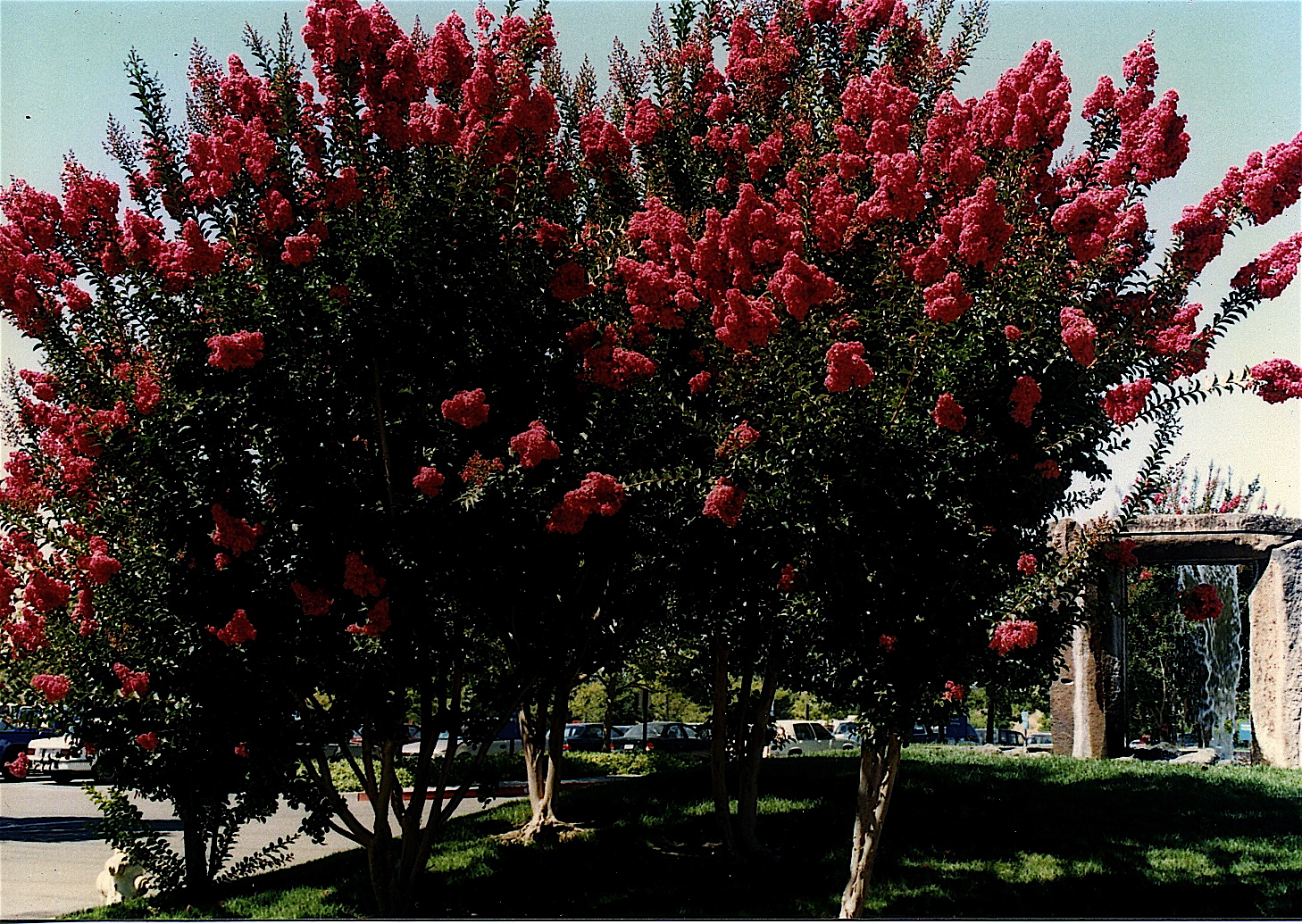Almost every garden installation includes trees, and the selection and placement of trees is one of the one of the largest elements in the design process. At Details Landscape Art, we almost always select deciduous trees for small residential gardens. 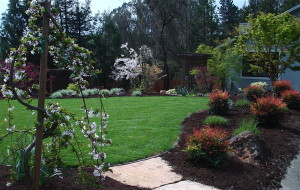
Evergreen trees are messy…they drop their leaves a little bit at a time continually throughout the year. Deciduous trees, on the other hand, drop their leaves all at once in late fall. We generally do not recommend installing messy evergreens near patios, play areas or lawns, because they require constant maintenance – the leaves need to be picked up frequently. Details Landscape Art designs and builds gorgeous landscapes throughout the North Bay, including Sonoma County, Marin County, and Napa County. Most neighborhood yards we are called upon to landscape are smaller fenced in yards with neighboring homes close by. In these situations it’s really difficult to install a tree that’s not near a patio or entertaining area. So we usually choose a smaller deciduous tree, and use tall narrow evergreen shrubs to solve privacy issues near the perimeter of the garden. In larger projects where there’s lots of room, no problem planting evergreens out away from the living areas, where it doesn’t matter if the trees drop leaves all year long. Many deciduous trees offer spring blossoms, followed by red or green leaves in summer, and then fall foliage before they drop. Some, like the Japanese maple ‘Sango kaku’ have a vibrant coral red bark in winter.
Deciduous trees we like to use:
- Acer palmatum (Japanese maple) – so many varieties available, in maroon and green leaf colors. See separate blog on Japanese maples. One of our favorite for form, branching structure and color.
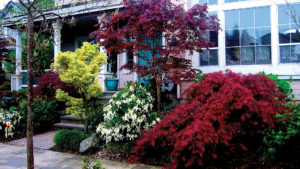
- Pistacia chinensis (Chinese pistache) – larger tree, leafs out later than most, green all summer the an iridescent yellow or orange or even red fall color
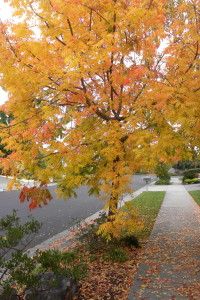
- Acer rubrum (October Glory scarlet maple) – gorgeous fall foliage – one of the larger maples, it is fast growing to sixty feet tall and forty feet wide.with larger, typical maple leaf.
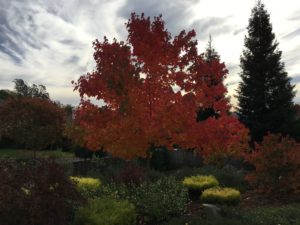
- Lagerstroemia indica (Crape myrtle) – brilliant flowers in August-September. Powdery mildew is a serious problem in our climate zone – Indian name varieties are powdery mildew resistant. Crepe myrtles flower on new growth, so tip tune when dormant to encourage new growth. Flower colors are available in fuchsia (Tuscarora), red (Tonto), white (Natchez), lavender (Muskogee), coral pink (comanche), and deep pink (Sioux).
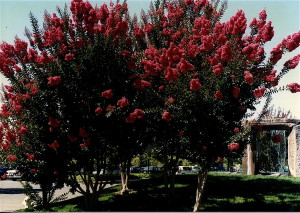
- Prunus akebono (Akebono cherry) – pinky white spring blooms
- Prunus‘Snow Fountains’(Weeping cherry) – grows to about ten feet tall and about six feet wide, they are trained at the growers to weep straight down. Beautiful white spring blossoms, green all summer, then turns gold in late fall. Pruning involves cutting the bottoms of branches that reach the ground
- Cercis occidentalis ‘Forest Pansy’ (Western Redbud)- one of our favorite small deciduous trees. The purple flowers emerge in spring on bare branches, followed by maroon heart shaped leaves all summer long.
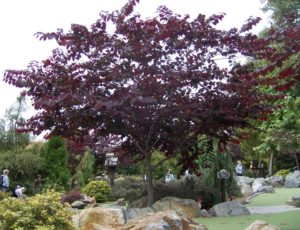
- Sapium sebiferum (Chinese tallow tree) – bright red leaves in fall
- Cornus florida (Dogwood) – small shade tree, blooms in spring. Available colors are white, shades of red, shades off pink.

